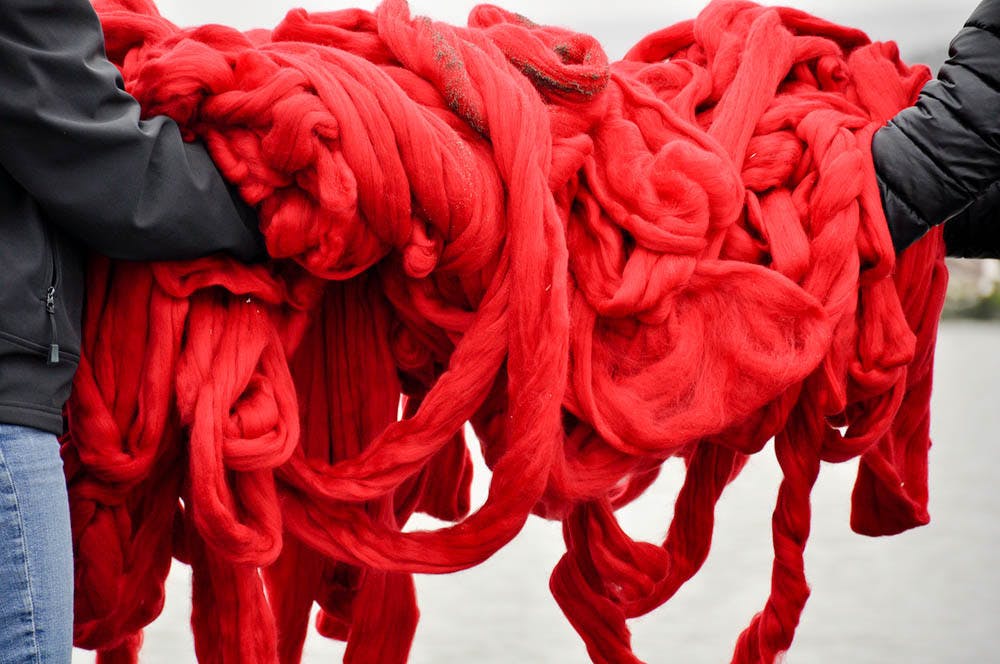On Wednesday, the University’s Visual Art Department hosted a talk by artist Cecilia Vicuña, in which she discussed themes and subjects surrounding her artistic career that ranged from ecological destruction to women’s rights.
Featured in acclaimed museums like Tate Modern, MoMA and the Guggenheim Museum, Vicuña’s work includes a wide range of poetry, films, installations and paintings. She is most well-known for her series of installations that seek to comment on indigenous histories through the use of spatial and material imagery of wool quipus, an ancient Incan form of communication using knots.
University community members as well as RISD students and members of the local Providence community gathered in the packed auditorium of List Art Center to hear Vicuña speak. Singing into the microphone, she drew laughter from the audience by greeting an infant in the crowd. She then went on to describe the beginnings of her professional artistic career after she emigrated from Chile to the United States. As Vicuña elaborated on her early experiences in the United States, she revealed how her work addresses aspects of culture and heritage.
Some of the primary works that Vicuña focused on during her talk related to the women’s rights movement in Chile. She compared a colloquial phrase of modern feminism, “By resisting we persist,” to one of her early works in the mid-’60s that emphasized the relationship between the words ‘resisting’ and ‘existing.’
“Poetry does not exist in books alone,” Vicuña stated, referencing the echoes of her word choice in the practices of modern activism. “It exists somewhere else as well.”
Much of her work centered around the themes of nudity and identity in relation to social freedom. One painting she discussed depicted nude figures marching for feminist ideals, flying out of prison and proclaiming the music of Janis Joplin.
During the question-and-answer portion of the talk, an audience member asked Vicuña if she intentionally connects the ideas of grief and nudity in her work. In Vicuña’s response, she touched on the notions of body and suffering. “People are afraid of grief; people are afraid of pain,” she said. “All these emotions exist in the naked space of the soul.”
Vicuña’s other artwork comments on ecological destruction, such as the invasion of microplastics on historically significant Chilean beaches. One installation on this theme, “Balsa Snake Raft to Escape the Flood,” was featured in the Contemporary Arts Center New Orleans. The work, which focused on the losses suffered from Hurricane Katrina, consisted of plastics and other debris hauntingly suspended in mid-air.
Audience member Kenneth Neighbors ’22 found Vicuña’s presentation to be particularly illuminating in terms of the comprehensiveness of the social histories she focuses on. “It was really interesting how Cecilia highlighted so many marginalized stories and narratives through her work,” he said. “It makes you think about how many perspectives we miss in everyday art.”





